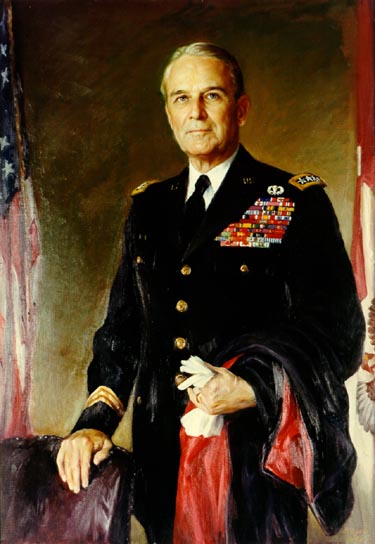
Maxwell Davenport Taylor was born in Keytesville, Missouri, on 26 August 1901; graduated from the United States Military Academy, 1922; was commissioned a second lieutenant of engineering, June 1922, and attended his branch course; served in Hawaii with the 3d Engineers, 1923–1926; married Lydia Gardner Hopper, 1925; transferred to field artillery and served with the 10th Field Artillery, 1926–1927; was promoted to first lieutenant, February 1927; studied French in Paris and was instructor in French and later Spanish at West Point, 1927–1932; graduated from the Field Artillery School at Fort Sill, 1933, and the Command and General Staff School at Fort Leavenworth, 1935; was promoted to captain, August 1935; was a student of Japanese at the American embassy in Tokyo, 1935–1939, with detached military attache duty at Peking, China, 1937; graduated from the Army War College, 1940; was promoted to permanent major, July 1940; served in the War Plans Division and on a Hemisphere defense mission to Latin American countries, 1940; commanded the 12th Field Artillery Battalion, 1940–1941; served in the Office of the Secretary of the General Staff, 1941–1942; received temporary promotions to lieutenant colonel, December 1941, colonel, February 1942, and brigadier general, December 1942; was chief of staff of the 82d Airborne Division, 1942, then its artillery commander in operations in Sicily and Italy, 1942–1944; received temporary promotion to major general, May 1944; commanded the 101st Airborne Division in the Normandy invasion and the Western European campaigns, 1944–1945; was promoted to permanent lieutenant colonel, June 1945, and brigadier general, January 1948; was chief of staff of the European Command, 1949, and commander of the United States forces in Berlin, 1949–1951; was promoted to temporary lieutenant general and permanent major general, August 1951; was assistant chief of staff for operations, G–3, and deputy chief of staff for operations and administration, 1951–1953; was promoted to temporary general, June 1953; was commander of the Eighth Army in the final operations of the Korean War, 1953; initiated the Korean armed forces assistance program, 1953–1954; commanded United States Forces, Far East, and the Eighth Army 1954–1955, and was commander in chief, United Nations Command, 1955; was chief of staff of the United States Army, 30 June 1955–30 June 1959; opposed dependence upon a massive retaliation doctrine, pushed for an increase in conventional forces to ensure a capability of flexible response, guided the transition to a "pentomic" concept, and directed Army participation in sensitive operations at Little Rock, Lebanon, Taiwan, and Berlin; retired from active service, July 1959; was recalled as chairman of the Joint Chiefs of Staff, 1962–1964; again retired; became ambassador to South Vietnam, 1964–1965; was special consultant to the president and chairman of the Foreign Intelligence Advisory Board, 1965–1969; was president of the Institute of Defense Analysis, 1966–1969; died in Washington, D.C., on 19 April 1987.
The Artist
Bjorn Peter Egeli (1900–1984) was born in Horten, Norway. He attended school there until his mid-teens, when he came to the United States. During the 1920s he studied at the Miller Art School in Brooklyn, New York, and then attended the Corcoran School of Art in Washington, D.C., where he graduated with top honors after four years of tutelage under such leading instructors as Richard Meryman, Eugen Weisz, S. Burtis Baker, and Mathilda Leisenring. Mr. Egeli, whose son Cedric is also a contributor to the Army chiefs of staff portrait collection, painted Generals Maxwell D. Taylor, Lyman L. Lemnitzer, and Frederick C. Weyand for the series.
Maxwell Davenport Taylor
By Bjorn Peter Egeli
Oil on canvas, 47" x 33", 1972
[130]

[131]